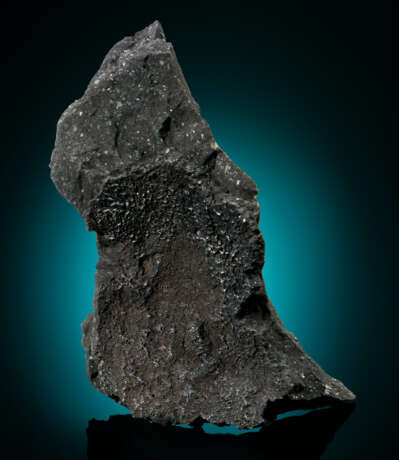ID 716416
Lot 31 | COLD BOKKEVELD — RARE 19TH CENTURY CM2 WITNESSED FALL
Valeur estimée
$ 2 200 – 2 800
“The event occurred on the morning of Oct 12, 1838 [subsequently corrected]. There was a cloudless sky without wind, when, say the Hottentots Kievet and Rattray, both under oath before a magistrate, about 9 o’clock ‘We heard a strange noise in the air, resembling the loudest thunder we had ever heard; and on looking up we perceived a stream passing over our head, issuing a noise which petrified us with terror: a burst took place close to the wagon [with which they were getting wood], when something fell and a smoke arose from the grass. My master sent me to look what it was that had fallen when I found a stone quite warm, so much so that I could not hold it in my hands.’ We are so fortunate to possess a good specimen of the African meteorite, through the kindness of a friend in Boston. It corresponds with Sir M. Faraday’s description, and is very different in appearance from any meteorite which we have seen.”
It was absolutely different from anything previously seen and the M. Faraday referenced is Michael Faraday (1791-1867), one of the most renowned scientists of all time. Available only once in a blue moon, this fragment features a large patch of fusion crust; the charcoal-hued matrix of this historic specimen is pristine. Like lot 23 and lot 42, this offering contains small calcium aluminum-rich inclusions (CAIs), the oldest matter humankind can touch.
Christie's would like to thank Dr. Alan E. Rubin at the Department of Earth, Planetary, and Space Sciences, University of California, Los Angeles for his assistance in preparing this catalogue.
15 x 19 x 12mm (0.5 x 0.75 x 0.5 in.) and 3.271g (16.5 carats)
| Adresse de l'enchère |
CHRISTIE'S 8 King Street, St. James's SW1Y 6QT London Royaume-Uni | |
|---|---|---|
| Aperçu |
| |
| Téléphone | +44 (0)20 7839 9060 | |
| Commission | see on Website | |
| Conditions d'utilisation | Conditions d'utilisation |




